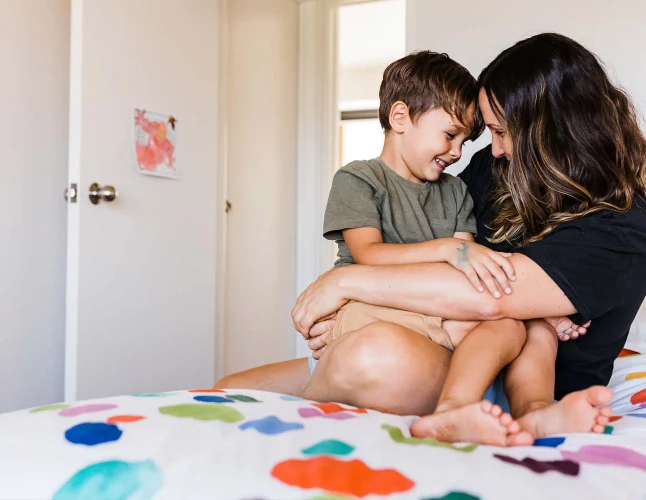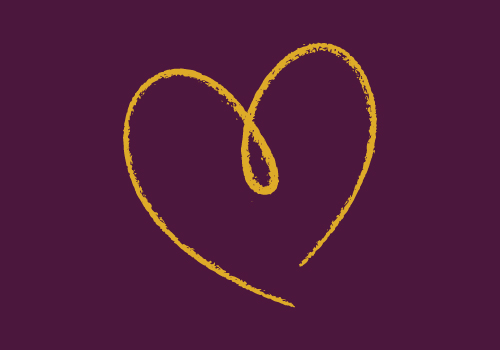
Te hinengaro mīharo The amazing brain

Pēpi is precious and so is their brain. Repeating activities with pēpi, particularly during the first three years, helps to prepare their brains for future learning.
‘ Hinengaro ’ translates as mind, thought, intellect, consciousness and awareness. ‘Mīharo’ is te reo Māori for ‘amazing’ or ‘marvellous’. The brain is amazing.
Brainwave Trust kaiako Jason Tiatia explains how whānau can support tamariki to grow great brains.
Growing great brains (transcript)
Jason Tiatia, Brainwave Trust Kaiako
You are probably already doing loads of things our tamariki need to grow a great brain and the rest is actually pretty simple.
Here’s what you need to know.
The brain development of your tamaiti is influenced by their experiences.
[Music]
Beginning just days after conception brain development before birth forms a critical foundation for later learning.
While in utero babies grow majority of their neurons or nerve cells they will ever have.
[Music]
Once born, the brains of our pēpi grow and change rapidly.
There’s a lot to take in.
Looking around, hearing sounds, feeling things on their skin, tasting things moving their bodies.
Most of the growth and development of the brain after birth is forming crucial connections between nerve cells or neurons.
These links between neurons are called synapses.
Synapses allow the brain cells to connect and communicate with each other and form rapidly.
You can help tamariki grow great brains and connect up their synapses through gentle touching, talking being with them and protecting them from overwhelming or frightening events.
[Music]
Tamariki need to do things over and over again in order to develop strengthen and preserve their neural network of connections.
Tamariki seem to know this whether it’s repeatedly dropping objects on the floor or asking for the same bedtime story for many nights in a row.
Think how practise makes us better at riding a bike or learning learning a language, tamariki are practising everything.
Play is one major way of doing this. When you support your tamaiti to play with you, their siblings or cousins, or own their own your tamaiti is growing a great brain.
All children will have both negative and positive experiences at different times but it’s the experiences they have over and over again that most influence which connections are pruned or kept.
If the experience are mostly positive and if they’re well supported during their negative experiences this might help them to trust the world and lessen their stress.
[Music]
So ultimately we are all providing a safe, consistent nurturing care which is most of what our tamariki need to grow great brains.
[Music]
Neuroscience is just catching up
Tīpuna Māori didn't talk about 'brain development', but the way they parented was very much aligned to practices that neuroscientists are now discovering. A loving, nurturing and caring environment was part of a traditional upbringing in the pā, village. This was embedded into the Māori way of parenting.
Watch this thought-provoking kōrero from the Toi Tangata hui ā tau 2021. Brainwave Trust kaiako Deb Rewiri shares her knowledge on a kaupapa Māori approach to neuroscience, the important role of whānau and hapū surrounding and embracing our tamariki in order to build their potential.
He Oranga Wairua, He Tikanga Aroha: Neuroscience through a cultural lens (transcript)
(Illustrated graphic for Toi Tangata Hui ā Tau 2021 appears on screen with illustation of Deb Rewiri at the centre of it)
(Graphic fades away to display footage of remote 'Zoom' audience who are tuning in from around New Zealand to hear Deb Rewiri speak.)
Darrio Penetito-Hemara (host)
Ka kōkiri mātou, ka tīmata i tēnei kaupapa. Tuatahi mihi ki a koutou kua huihui mai nei ano. Hīkaka katoa i ngā korero kua tukuna i tēnei ata.Kare e kore tēnei wāhanga. Ka pērā hoki te āhua. Ki a tātou, ko wai tēnei te mareikura me kī ko Deb Rewiri tēnei kua tākoha tōna wā kia tautoko te kaupapa o Toi Tangata me kī.Nō Ngā Puhi, Ngāti Hine, Te Whānau a Apanui, Ngati Awa me ki. He mihi atu ana ki a koe te whaea. Ko tōna kaupapa He Oranga Wairua he tikanga Wairua.So Deb Rewiri is the sole director of He Oranga Wairua He Tikanga Aroha. A passionate wāhine who works to support whanau, hapū and iwi community development. She’s known for her good sense of humour and ability to celebrate a process that leads to a greater understanding and meaningful making for both the individual and the collectives.
Look forward to some of those hatakēhi jokes that are coming whaea [laughs]. Deb has a wealth of experience ranging from presentations to many groups from early years, adolescence, prisons and schools. She is often called upon to deliver kaupapa Māori presentations where science is the beginning to catch up, beginning to catch up to the indigenous practices pre-colonisation. Fits perfectly to the kaupapa that we've been speaking about over the last day and a half and that kaupapa will continue to roll out.
So without further ado. Ka whakawhiti atu kia koe, e te whaea.Mihi atu ana ki a koe. Kei a koe te wā. Kōkirihia!
Deb Rewiri (guest speaker)
Tēna koe Darrio, Tēnā koutou ngā manukura e tiaki ana i o tātou tamariki, mokopuna. E kiia nei te kōrero ko rātou ngā rangatira mō apōpō. Nō reira tēnā koutou. Ka tangi tonu te whatumanawa. Mā te hunga wairua ratou kua wheturangitia haere, haere, haere e moe. E hoki ano ki a tātou ngā tapuwae tēnā koutou, tēnā koutou, tēnā koutou katoa.
Kia ora whānau. I do have a share screen and I really wanted to begin this process of why the neuroscience, that's the language of the pakeha scientists that discovered this in the 1990s- it's called the decade of the brain. However the more I ead and the more I researched around our tipuna, what I noted was actually the way that they were treating our babies was way ahead of their time.
Some of those observations of people like Samuel Marsden, I'll just read some of the quotes that he wrote in 1814; “I saw no quarrelling while I was there. They are kind to their women and children. I never observed either with a mark of violence upon them nor did I ever see a child struck.” In 1820 he again journaled; “there can be no finer children than those of the New Zealanders in any part of the world. Their parents are very indulgent and they appear very happy and playful and very active.” So already, what we have is an understanding. Because the only way you can perceive another culture is through your own lens. And so already we have an understanding of when the colonisers landed here, they could already perceive that we were doing something that was far different to the practices that they had come from.
So what I'm going to really talk about today is how brilliant and intelligent our people were and I'm going to amplify that in a way that we begin to reconstruct an idea, or an ideal, of how we were parenting ‘pre-contact’ and how protective we were, and are, about our babies. If you notice, I go back to the past and then bring it into the present-day context. Our babies’ brains grow and develop through our love. I remember I was at a hui once and I was talking about oxytocin and endorphins and neurotransmitters and one of the kaumātua said to me “kia ora whaea, do those things all mean love?” And I said “āe.” and he said “well why don't you just say love?” And I said “okay then”. So I think it's important to acknowledge that we have an understanding of what those scientific words are in the modern day context but also to elevate our whakaaro. Because we've come from that whole process where we looked at relationships as being the ‘foundation’ of anything that we were, in terms of building upon that. So that was maintained and celebrated through whakawhanaungatanga and manaakitanga all those processes.
Now we have an understanding of how what happens to you in your first three years of life, determines greatly your pathway for the rest of your life. Because we know that 85% of the weight of your brain is developed within those first three years. And again we can reflect upon how our tipuna and the way that they were with us was very like tau te rangimarie our babies weren't even. If you growled at a child you were looked down upon. So this calming process was very much the approach that they took at that particular period of time. How you can ensure your babies get the best start in life, to ensure they strive for the best? Well again, a growth mindset. You know Mātaranga Māori is premised off of a growth mindset and positivity. So I remember kaumātua and he said we didn't focus so much on the problem we focused on the potential of anybody. For me working in this field, I always think about Sir Mason Durie and he talks about a centrifugal. He said “the way that we think in terms of Māori is that it winds up and it winds down, rather than a linear process”. Whaea Pātai
So again, premising off the tikanga that we have is like looking at what is the potential within us already? What were the pou that held us. And so if we’re thinking about Mātauranga Māori we have to think about wairua. One of the key aspects of our Tipuna was that understanding of why there was such a protective element that was at play when our babies were born was that their wairua was already intact. Auntie Rose Pere often talked about how they came in fresh from the ‘other side’. So understanding that their wairua was intact and all we had to do as the whānau that surrounded them was to actually help to build their potential. The interesting thing is that at the first neuroscience hui I went to was with Dr Bruce Fury and he spoke about ‘transgenerational developmental heterogeneity’. Flash aye? And I went up to him and I said “gee that's pretty flash! We have another [term] in Māori which means exactly the same thing”. And he said “wow that's really interesting what is it?” And I said “it's called whakawhanaungatanga and all it really means is that ability for us to build relationship within the different ages and stages of development.”
So when we lived in these villages; of course you know because I whakapapa up to Kororāreka and out on Kahuwera, [ours] was the first pā site that Cook saw when he came into Ipipiri and our tūpuna went out to meet him over a thousand years ago. And what they had an understanding of, way back then, was actually [that] the way that we treated our babies was very much embedded in the practices of tikanga at that particular period of time. So they were closer (our babies were closer) to the gods than what we were. Because we were in now in the physical te taiao it was sort of like we had grown up through that but actually our babies their specialty was that they'd come in fresh from the other side. Hence those understandings and those observations from others that had come. I talked about the first three years as a critical period of time that we now understand, this is when the most brain growth happens. Again, if we reflect on how our tūpuna were, that was a period of time when our babies were hikihiki. So you are not spoiling your baby if you hikihiki them because babies cannot lower their stress response systems. They actually have to have a grown-up perso, another brain, a mature, calm brain to help lower their stress response system. They cannot do that on their own. So I often say this in the prison; how do babies let us know they're hungry or that they need to be hikihiki or that they want a nappy change? All of those things are through the process of crying. Babies cry, it's normal for babies to cry. What they're doing is letting off their stress response system to say I need help. Because they don't come out saying oh mama feed me or papa change my nappy. They actually need us to read what they need. Now pre-colonization, when we lived in these village settings, what we had was four adult brains to look after one brain, one baby brain. But we've flipped it on its head now and so what we've done is isolate our whānau. So we’re putting what we call single mamas or papas into whare on their own and we're asking them to raise a baby to their optimum level, when actually they don't have a system of support holding them. In the villages, we did have that system of support. So how do we again evolve it into this current day so that we know that we've got those systems of support in place? That's a question you know that each of us in terms of our own whānau, hapū and iwi development that we have to ask ourselves.
So getting back to what I want to say, there was an anthropologist and his name was Prescott. He studied indigenous cultures and he found that cultures that carried their babies for most of their babyhood actually had lower levels of violence within that culture. Guess who was top of the list? It was us Māori. We were top of the list because we were a culture that touched and carried our babies for most of the time. You know the waha, the way that we wrapped our babies and carried them close to our bodies again lowers the stress response system. When babies have what we call ‘the attachment process’ in this new language or skin to skin contact, it actually helps babies to come back to a place of calm. So in studying these indigenous cultures, Prescott found it in three cultures; Balinese, Maori and Papago. So those were the three cultures he found and again it was because they held the babies close to their body. So if we think about that act of carrying, and I always remember my mother saying to me that when I'd go down to the Te Kaha you know my grandmother she worked the māra kai and my mother would say you'd be out of nappies you'd be off the bottle because I trained you and I said no mum, you trained yourself. She hadn't trained me, she’d trained herself. And then she’d say you go down to your grandmother, my nana would work in the māra kai, and she’d put me back into nappies, she'd carry me on the waha, close to her body. So my grandmother already understood these processes. It's not that far away. Often when i'm sharing whakaaro inside the prison, the tāne and the wāhine will say that happened 200 years ago, what does it matter now? And I remind them of Amster Reedy he says it doesn't matter how far back you go it's how far forward you can take it. So our academics, in terms of bringing this knowledge back into our present day context, how do you take that forward? Because a lot of our people have an understanding that Once Were Warriors was actually our story and our only story and it's to remind them that actually, pre-contact there was an emergent story and somehow we have to wake up our ‘cellular memory’. I heard Dr Wayne refer to this as the ‘blood memory’. So it's not only the ‘blood memory’, it's also our ‘cellular memory’ that we have to wake up, because it's embedded in those neurons that come on down through whakapapa.
I'll often share these stories, these teachings. I was down in Uawa and this kaumātua said to me “I don't understand all this science jargon but I remember back in the day when we worked the māra kai, if anyone was carrying hara they weren't allowed to work in the māra kai.” He added “you know the other thing Deb, they weren't allowed to handle our babies”. So again it brings in that whole concept, or that context of, it takes a village to raise a baby. Because the village wrapped around everyone. If somebody needed tautoko they wrapped around them. So how do we again begin to incorporate that into the modern day world that we currently live in? And for those of us who are living rurally, we have the advantage of actually knowing and having those villages already established. But actually, how do we extend or expand on these ideas of not just the mātauranga but also using our own science to actually elevate that and to expand on that idea of changing that environment. Having those big dreams is really important now.
I usually have a model of a brain on the screen so that I can explain what that looks like but I’m not able to share my screen so that's not going to happen. I'm going to use this to look at what the brain looks like. I might also get you to use your hands to do a bit of travelling around your head.
(When the speaker says “I’m going to use this to look at what the brain looks like” the speaker places her two fists together to form a brain-like shape.)
What I'd like you to do is to put your two thumbs at the back of your head and watch you'll feel that there's a curve, a curve that goes up into your skull. So right at the base of your brain is what we call your spinal cord okay and that spinal cord sends messages down through the nerve endings to every part of your body. And what's the most tapu part of the body whānau? The head, āe. Again, how clever our people were. Really clever because housed in there is everything, what we call these neurotransmitters. And here's a fact, again some mathematician worked this out, every child is born with over 86 billion brain cells, more than they will ever need throughout their lifespan. The job of those brain cells is to connect themselves up. How do we do that? We actually do it not only through our DNA; what we collect from our mama from our papa, through whakapapa as we collect DNA, but also the potential is embedded in our environment. So our environment is actually shaping the potential within the brain and the brain is wiring itself up. The brain doesn't have a mechanism to say gee mum that was a shitty experience I ain't gonna embed that, it does. Because the first function of the brain is to help us to survive. So that survival mechanism is embedded at a very young age. Again, babies do not have the mechanism to protect themselves, so we have to fall in love with them. Falling in love with our babies releases oxytocin, it's called the hug hormone within our brain. But here's the interesting thing, when we maintain eye contact, not looking at our telephone while we're breastfeeding the baby, eye contact when we do that simultaneously, the baby releases oxytocin too. So this mechanism is actually provided as a protection. So again, thinking about how our tūpuna were.
Here we have a spinal cord connected to the cerebellum.Now the cerebellum, if you feel an under that groove, is housed there. What the cerebellum is responsible for is actually our movement, our coordination, our balance. Here's an interesting thing, we can actually think whilst we're moving. Now I remember doing this kōrero with one of the kōhanga reo and one of the kaiako he looked at me and he went “uh oh”. And I said “come on, share with me”. He said “you know when the tamaiti stands and they share their pepeha?” I said āe and he added “they fidget a lot”. I responded and said “this is normal, children are made to move”.
Our education system was set up shortly after industrialization and guess what? We're still teaching that model now, hundreds of years later. Now literacy and numeracy can be taught in any forum. It can be taught in te taiao, it can be taught with movement with with waiata, with kapa haka. But we've limited our thinking. We've colonised our thinking into this is the only way you learn. No no no! Anyway, I had a kōrero with him and I said to him “so how do you feel about this now?”. I said “if you're telling them to stop fidgeting, tell me how many kaumātua do you see on the marae ātea that just stand there? I said “I don’t see any. Some of them are waving there tokotoko around, they're walking up and down up and down. They're never still. So telling our babies to keep still because they're going to learn, is what’s interrupting the learning process. So let them move! Whilst they're moving, they are learning.”
(When the speaker says “I’m going to use this to look at what the brain looks like” the speaker moves her hands to the back of her head to feel the small groove.)
Now if we come into the depth of the brain, what we've got is the spinal cord. This is where we send all the messages to our body, the functions, so how we speak, how we move in our body, it’s really important. The cerebellum is right at the base. It’s for movement and coordination. Then we go deep, very deep into our brain to find what we call the limbic part of the brain that is responsible for our feelings, our emotions. So buried deep within the brain are our emotional centres - our feelings and memory centres. Our memory centres are closely aligned to our emotional centres. So what I’d like you to do, just for a moment, is to think about an experience that you had when you were about eight or ten. Something that you were enjoying doing. So you're either playing with your siblings or with your mates or it was something you're enjoying with your whånau at the marae. Whatever it is, just for a moment I want you to think about that. (speaker takes a long pause). Put your hands up if you had a memory?
(When the speaker says “hands up how many of you had a memory?” most of the audience raises their hand.)
Alright, so what you're accessing very deep in here is your memory centres and I said a ‘happy experience’ so I've already predetermined what you're going to be thinking of. So our emotional centres, our memory centres, in terms of trauma, the more we activate the trauma, the more it becomes a living reality.
So in activating trauma, who is it that's activating it? Is it the therapist or is it something that we need to actually express to make sense of our world? Emotions are emotions. They come and go, they're not something that's there forever and no one is in crisis 24/7. So the opportunity to have laughter, to have play, to have these processes engaging our babies in a way that actually helps them build memories. What we're doing is actually creating capacity to build their learning. So i'll say it again, having joy, fun, laughter that activates oxytocin, endorphins, dopamine, all these neurotransmitters of love, laughter, through whatever process we're bringing to them is actually activating their learning. A calm brain is a learning brain.
I want to read some of these observations back at first contact. In 1839 a missionary who’s name was Richard Taylor said “one of the finest traits I have noticed in the New Zealanders is that of parental love. The men appear chiefly to nurse their children and generally to be seen with one on their back covered up under their mats. The little things seem likewise sensible of their father's love for they seem principally to cling to them.” So everybody in the village, in the hapū, was involved in the parenting. In 1840 the writer Joel Polack wrote it is not uncommon to see young children of tender years sitting next to their parents and the war councils apparently listening with the greatest attention. They ask questions and the chiefs answer them with an air of respect, as if they were a corresponding age to themselves. I do not remember a request of an infant being treated with neglect or a demand from one of them being slighted. So our babies, when they sat in the council of the chiefs, if they asked a question they were given the same level of respect as if they were of a corresponding age. Remember a calm brain is a thinking brain. They had just come fresh from the other side. So our tupana already knew their wairua was intact. Any messages they were to download and share, had to have been very important to listen to.
The brain has been activated consistently and it's taking in from its environment, from a multitude of places. The baby is beginning to understand who I am and how I am in the world and can I trust these people that I’m looking at? Can I trust them and if the mechanism for yes happens, well it's by the way that we interact with them. That's why those environmental factors are so important. I was listening to a kōrero around taonga pūoro and a lot of these practices have been lost.
The corpus callosum is the thick membrane that separates the two sides of the brain. So that's why the baby is born with the soft fontanelle, up here (speaker points to head), and that's what we call ‘the soft spot’ because it's the fusing together of the two sides of the brain. Generally it takes around 22 months. So our tupuna used to play the taonga puoro (Māori flute) into the soft spot. What they would play was those old . They would play those karakia into the babies fontanelle and so they were learning within this process but not only that, our language centres are developed.There are two two two language centres, one is called Wernicke's area and the other is called Broca’s area. These two language centres are really key in terms of us embedding information. So the prefrontal cortex is the last part of the brain to develop and it makes sense to me why they would play the taonga puoro into the soft spot. The prefrontal cortex is our ability to empathise, to have compassion, to look at humanity in a new way.
Now we understand in terms of what has happened to us through colonisation as we got into different parenting practices, there's lots of different factors that have played into this. With industrialization, our people left our villages and they went into the cities to begin to work.
They were sending money back to the villages but the most important aspect that they were missing out on was actually helping those villagers to flourish, helping to ensure their tikanga would continue to be transmitted down through the next generation. Those of our whānau that stayed there, are the ones that are carrying the torch forward. Those of us, myself included, who are second language learners and tikanga learners, we're trying to bring that information but what we have to do is just keep on decolonizing our mind.
So empathy is the prefrontal cortex. It helps us to visualise, to be creative and to have future forward planning. Again, I get it, I get why they were so gentle loving and caring with our pēpi. They were so clever but they had that understanding because the pou were already intact and they were great observers. So as they watched the taiao emerging, they understood what was emerging within our pēpi and why the importance of that nurturing behaviour had to keep carrying on. So hundreds of years later in the 1990s, the decade of the brain, neuroscientists, psychologists, and experts in their field have suddenly discovered how important those first three years are. And I keep reminding our people, our tūpuna already knew this. They were already practising this. Their science was alive and well.
I don't know if people have questions to ask but I think that's a good place to stop Darrio and if there's any questions
Darrio Penetito-Hemara:
As each part of the kōrero came through they were resonating really well with a lot of those things and some whanau decided, cool I'm going to get my taonga oriori now and we're going to practice on pēpi and there's a lot of different areas in there.
So I was watching whaea, as you were doing your kōrero and when you were talking about the different parts of the roro I saw three main movements. What I would like to do is ask everyone who's in a position to turn their camera on and I want to take a screenshot of everyone doing those different nekehanga so that we can pull something from there at a later point.
I want to take a couple pātai, so we'll do three different parts of the movements. So that's the first one kua reri, toru, rua, tahi. And the next nekehanga toru, rua, tahi so maybe we'll go with that one first. And I think the last one was ko tēnei toru, rua, tahi. So unless anyone has any other pātai, you've managed to wrap it up like a champion on time there whaea. He mihi nui ki a mātou o Toi Tangata, mo matou te waimarie, te whakarongo, te hono te whakarongo ki a koe, ā roro, ā wairua i tākoha mai e koe.
I think one of the things that we would like you to do is possibly send out that presentation should anyone want to go through. It might be a variation of the presentation whaea okay So if you can get that through to us, we can ensure that it goes out with the post communications and then people who want to jump in can jump in and learn a little bit more.
Ka mōhio mai whānau Our intention is to not leave things as these 45-minute workshops. So what we'd like to do is we're going to invite a lot of our kaikōrero to engage in wānanga ā tinana when we do have that opportunity. So for those of you who are sitting there going oh man I want some more I want some more, it's coming. Koina noaiho, ka whakamōhio atu ki a koutou.
Te mana o te whānau
We hear a lot about brain development in the first 3 years of a child’s life and how it’s the period of the most rapid brain growth in the lifetime of pēpi.
Parents, caregivers and whānau are responsible for building their baby’s brain – and they don’t need to be a scientist to do it.
Giving pēpi the best start in life is as simple as holding and talking to them right from the beginning. Even when pēpi is still in the kōpū, womb, their brain is making connections to sounds around them. So when you sing an oriori or talk to your puku, pēpi can hear.
Our brain likes a giggle
Laughing is good for all of us, not just kids. Endorphins, known as the brain’s ‘feel good’ chemicals, are released when we laugh. Especially when we laugh with friends and whānau.































